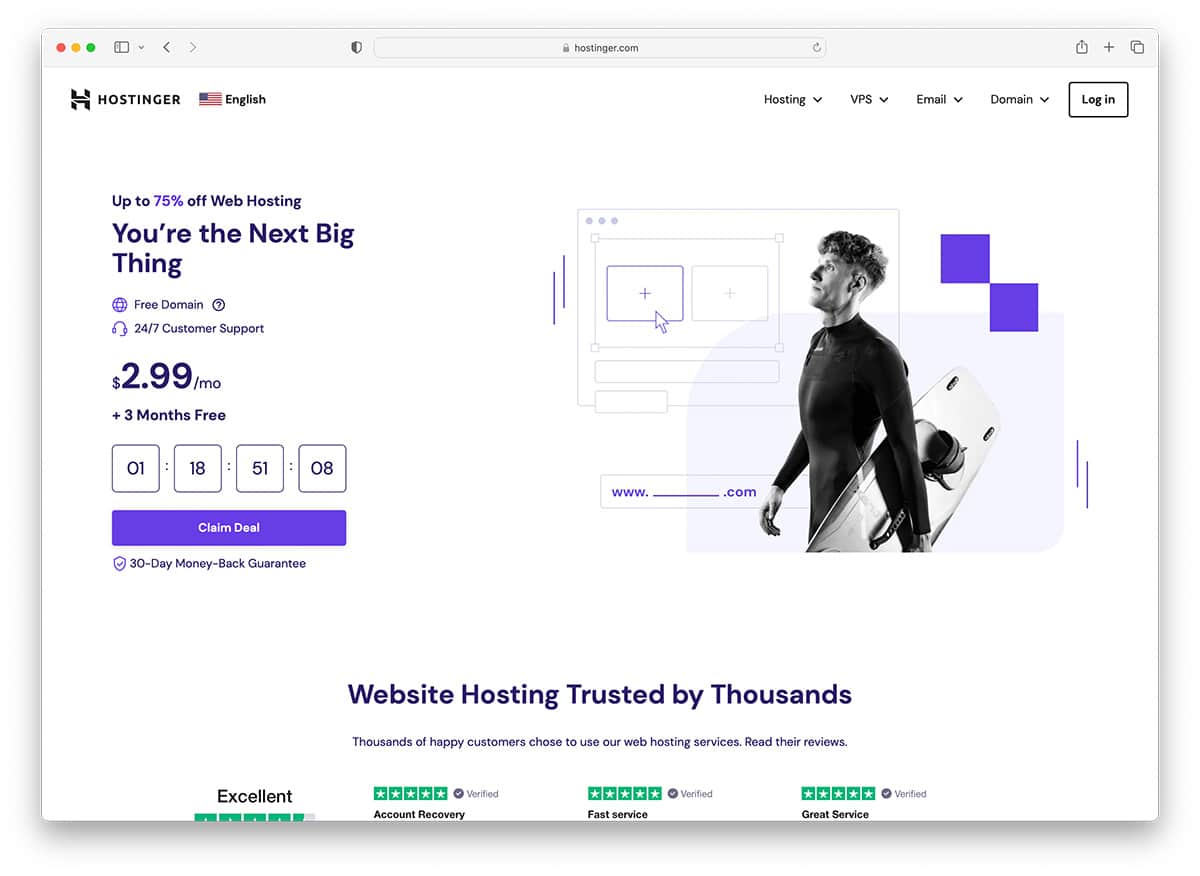
You can resolve the issue by installing an SSL cert if you get a warning saying "Nginx cannot support SSL certificates". To do so, you will need to install the SSL certificate on each server and device. In this article we will discuss how to create an SSL CSR with the DigiCert OpenSSL CSR Wizard.
Warning: Configuring nginx SSL Certificate
An nginx warning may appear if your SSL certificate is being used on your website. This message tells you that your server cannot use HTTPS. It means that your certificate doesn't match the domain name that is listed in the browser address bar. You will need to configure HTTPS to correct this problem.
Installing an SSL certificate on your NGINX server is the first step. A certificate authority can issue an SSL certificate. The contact information for an SSL certificate authority can be found online. Once you have your certificate, it is time to restart your server.
Installing an SSL certificate
An SSL certificate installed on your Nginx webserver will secure your website. It will also make customers feel safer. First, download the intermediate certificate bundle files from a repository and then install it. Once you have the files you will need to configure Nginx for the certificate. The configuration will depend on the Nginx version and OS platform.

An SSL certificate is required for all web servers that support HTTPS. This secure protocol encrypts data between the web server (and the browser). You must first download the Let's Encrypt certificate to install on your NGINX webserver. You should install it on your server and make sure to enable HTTPS on the NGINX configuration file.
The creation of a CSR
There are several ways to create CSRs for SSL certificate configurations with nginx. CSRs are a crucial part of SSL certificate setup. A CSR is required to submit a request to the certificate authority for a new certificate. This certificate allows Nginx and your visitors to provide HTTPS services.
You can store the private key of an SSL certificate in the same file that the certificate. The certificate should be kept separate from your private key. You can limit the ciphers or protocols that are used in an SSL connection by using nginx’s “ssl_protocols” property.
Use the DigiCert OSR Wizard
A CSR is the first step in setting up SSL certificates for Nginx. OpenSSL is used to create the CSR. Once the CSR has been created, you can then install the certificate to your Nginx Server. After the SSL certificate is installed, you must restart Nginx.
After you have received the CSR, save it in your same directory as your SSH folders. Next, you need to enter the organization's name, locality, and state. If necessary, you may also include a two-letter code for the country. You can also use a passphrase or password for further security. The CSR must be saved in the user directory. This directory is where you will keep your SSH keys. It is also necessary to create a backup copy the ".key” file.

Create a secret key
Setting up SSL on Nginx is easy if you have a private key. SSL must work correctly, and you need to protect your server against different vulnerabilities. The default SSL configuration may be sufficient to get the job done. These are steps to make your SSL configuration more secure.
First, you need to generate a private key for the SSL certificate you are installing. You can use Let'sEncrypt to create a new private key. It is best to use certificates with a shorter expiry (for example, Let’s Encrypt certificates expire after just 90 days). You will need a new private secret key once your certificate expires. You should renew your certificate regularly to reduce your risk of a private key compromise.
FAQ
How Do I Create a Free Website?
It all depends on the type of website you are trying to build. Are you looking to sell products, build a website, or create a portfolio online?
It is possible to create a basic website with HTML and CSS (a combination HyperText Markup Language & Cascading Style sheetss). Although HTML and CSS can be used to create simple websites, web developers prefer using a WYSIWYG editor like Dreamweaver or Frontpage.
If you don't have experience designing websites, hiring a freelance developer might be the best option. They will help you design a website that suits your specific needs.
A freelance developer may charge you either a flat-fee per project, or an hourly fee. The cost of hiring a freelancer varies depending on how much work they complete within a given timeframe.
For example, you might pay $50-$100 an hour to a company. Larger projects will usually attract higher rates.
A lot of freelance websites offer job listings. You could search there first before contacting potential developers directly.
How to design a website?
Your customers will first need to understand the purpose of your website. What do they look for on your site?
What issues might they be facing if they can't locate what they're looking at on your site.
Once you know this, you must figure out how to solve those problems. Make sure everything looks good on your website. It should be easy for users to navigate.
You should have a well-designed website. Make sure that it doesn't take too long to load. People won't stay as long if it takes too long to load. They will move on to something else.
It is essential to determine where all your products reside before you start building an eCommerce website. Are they all in the same place? Are they spread around your site?
You need to decide whether you want to sell one product at once or many different types of products. Do you want to sell just one type of product or multiple kinds?
When you answer these questions, your site can be built.
Now you need to worry about the technical side of things. How will your site operate? It will it work fast enough? Are people able to get it done quickly from their computers?
Will people be able to buy something without having to pay extra? Do they need to register in order to buy anything?
These are important questions that you must ask yourself. These questions will help you to make the right decisions and move forward.
Can I use a Template or Framework on My Website?
Yes! A lot of people use prebuilt templates or frameworks to create websites. These templates have all the code you need to display your information on your website.
Some of the most popular templates include:
WordPress - One of the most used CMSes
Joomla - Joomla is another popular open-source CMS
Drupal - An enterprise-level solution for large companies
Expression Engine – A Yahoo proprietary CMS
There are hundreds of templates available for every platform. It should not be difficult to find the right one.
What is the cost of creating an ecommerce website?
This depends on your platform and whether you hire a freelancer or go through a service provider. eCommerce sites usually start around $1,000.
You can expect to pay between $5000 and $10,000 for a platform once you have decided.
You won't spend more than $5,000 if you are using a template. This includes any customization you need to make to fit your brand.
Should I use WordPress, or a website builder
You can start small and build a solid web presence. If you have all the resources and time, then build a website. Start with a basic blog, even if your budget is limited. As you learn to develop and design websites, you can always add new features.
You should first set up your primary domain before you begin building your first website. This will give you something to point to when you publish content.
Statistics
- Studies show that 77% of satisfied customers will recommend your business or service to a friend after having a positive experience. (wix.com)
- It's estimated that in 2022, over 2.14 billion people will purchase goods and services online. (wix.com)
- It enables you to sell your music directly on your website and keep 100% of the profits. (wix.com)
- When choosing your website color scheme, a general rule is to limit yourself to three shades: one primary color (60% of the mix), one secondary color (30%), and one accent color (10%). (wix.com)
- Did you know videos can boost organic search traffic to your website by 157%? (wix.com)
External Links
How To
How can I choose the right CMS for me?
In general, there is a choice between two types Content Management System (CMS). Web Designers choose to use Dynamic CMS or static HTML. The most popular CMS is WordPress. But when you want to make your site look professional and well-organized, you should consider using Joomla! Joomla is an open-source CMS which allows you create any design website without needing to know any coding. It's simple to install and configure. Joomla is available in thousands of pre-made extensions and templates so that you don't have the need to hire someone to develop your site. In addition, Joomla is free to download and use. There are many benefits of choosing Joomla for your project.
Joomla is a powerful tool that makes it easy to manage all aspects of your website. Joomla has many great features including a drag-and drop editor and multiple template support. It also includes image management, blog management, blog administration, news feed, eCommerce, as well as blog management. Joomla is an excellent choice for anyone looking to build a website without learning how to code.
The great thing about Joomla is that it supports almost all devices, including mobile phones, tablets, desktop computers, laptops, etc. Joomla makes it easy to create websites for different platforms.
There are many good reasons to prefer Joomla over WordPress. Some of them include:
-
Joomla is Open Source Software
-
It is easy to install and configure
-
Over 2,000 ready-made Templates and Extensions
-
Download and use it for free
-
All Devices are supported
-
These powerful features are available
-
Solid Support Community
-
Very Secure
-
Flexible
-
Highly Customizable
-
Multi-Lingual
-
SEO Friendly
-
Responsive
-
Social Media Integration
-
Mobile Optimized